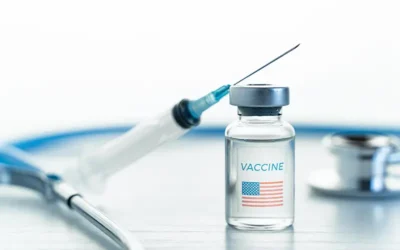The year 2019 began with many significant coding and billing updates for family physicians. Knowing about these coding changes and new guidelines is necessary to submit accurate claims and get paid appropriately. Family practice medical billing services ensure that providers do not miss out on opportunities to maximize reimbursements. With new payment models and rules, providers need to ensure proper documentation and understand the key medical coding and billing changes for 2019. Here is an overview of the updates for 2019 as discussed by the American Academy of Family Physicians (www.aafp.org):
- Skin biopsy codes: Skin biopsy is a common procedure performed by family physicians. CPT Coding updates for 2019 include skin biopsy CPT codes 11102-11107. The set of six new biopsy codes include three primary codes, each with an add-on code. These codes allow family physicians to report tangential, punch or incisional biopsies more specifically. Skin biopsy CPT code 11100 and add-on code 11101 have been deleted.
- Healthcare Common Procedure Coding System “G” codes for reporting virtual encounters: In 2019, Medicare introduced two HCPCS Level II G codes for reporting virtual services – G2012 and G2010.
- G2012 is for a brief communication technology-based service, eg: a virtual check-in, by physician or other qualified healthcare professional who is qualified to report E/M services. G2012 is provided to an established patient and does not originate from an E/M service that the patient received in the past 7 days nor does it lead to an E/M service or procedure within the next 24 hours or soonest available appointment. It involves a 5-10 minutes of medical discussion with an established patient. The code allows audio only (telephone) as well as synchronous two-way audio interactions that are enhanced with video or other kinds of data transmission. As there is a co-insurance associated with G2012, the patient bears a cost share when it is used.
- G2010 is for remote evaluation of recorded video and/or images submitted by an established patient (“store and forward”), which includes interpretation with follow up with the patient within 24 business hours, and does not originate from an E/M service that the patient received in the past 7 days nor does it lead to an E/M service or procedure within the next 24 hours or soonest available appointment. Follow-up with the established patient can take place via telephone, audio/video, secure texting, secure email or patient portal communication. Like G2012, there is a patient cost-sharing element when this code is used.
-
- New codes for interprofessional consultation: This year, two new codes were introduced for interprofessional consultation. Code 99451 is reported by the consultant, and allows access to data/information through the electronic health record (EHR), besides via telephone or internet. Code 99452 is reported by the requesting/treating physician/QHP (e.g., the primary care physician). Interprofessional services can be billed only by practitioners who can independently bill Medicare for E/M services. Importantly, CMS requires that the patient’s/family’s verbal consent is documented in the medical record for each interprofessional consultation service.
-
- New CPT code 90689 for influenza virus vaccine: Starting January 1, 2019, family practices are using a new influenza virus vaccine CPT code (90689: Influenza virus vaccine quadrivalent [IIV4], inactivated, adjuvanted, preservative free, 0.25mL dosage, for intramuscular use).
- Chronic care management (CCM): CCM got a new CPT code 99491, Chronic care management (CCM) services, provided personally by a physician or other qualified health care professional, at least 30 minutes of physician or other qualified health care professional time, per calendar month. All other CCM requirements apply.
- Digitally stored data services/remote physiologic monitoring: Medicare is paying for the following services in 2019:
- Use of a Food and Drug Administration-approved device – A patient may be prescribed the use of a Food and Drug Administration-approved device to monitor physiologic issues such as weight, blood pressure, or pulse oximetry. Family physicians can use CPT code 99453 to report the set-up and education for the device, as well as 99454 for 30-day supply of the device.
- New CPT code 99091 is used to report the physician review, analysis, care plan, and documentation of these activities. Now classified as an E/M service, code 99091 is time-based and requires a minimum of 30 minutes.
- New code 99457, remote physiologic monitoring treatment management services, 20 minutes or more per month delivered by clinical staff/physician/qualified healthcare professional requires interactive communication regarding the service with the patient or caregiver.
-
- Documentation: The Centers for Medicare & Medicaid Services (CMS) introduced notable changes to the coding and documentation of office visit E/M services (codes 99201-99215) in 2019. For both history and exam, physicians need review only body areas or organ systems that affect medical decision making for the current encounter. Documentation should be focused on only what has changed since the last visit or on relevant elements that have not changed, instead of re-documenting a defined list of required elements, says the AAFP.
-
- Merit-based Incentive Payment (MIPS): Jan 1, 2019, marked the first year physicians participating in MIPS will see their Medicare payments adjusted based on the 2017 QPP performance year Physicians participating in MIPS are seeing a slight increase in accountability for the cost of care, along with the performance threshold – the minimum number of points a physician must earn in 2019 to avoid a negative payment adjustment in 2021.
These updates are the most important changes impacting family physicians in 2019. Partnering with an experienced family practice medical billing company is a practical option for practices to ensure definitive coding, billing, and reimbursement.




